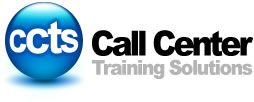The following fundamentals come directly from our Telephone Sales Mastery workshop. These ideas and suggestions can help you make better use of every customer contact. Please e-mail us when you have had success with any of the tips that follow.
Tip No. 1: Avoid using brand jargon and technical acronyms when speaking to callers.
Saying, “Our X1000 Plan works with Series R and Series S type systems,” doesn’t usually peak a potential buyer’s interest, especially on the telephone. Stay away from brand jargon as much as possible. Jargon and technical acronyms are problems. When a caller doesn’t understand what we’re saying, he/she will get bored or anxious quickly. And that’s a hang-up waiting to happen. If it is absolutely necessary to use brand jargon in a conversation, make sure you define it or explain it right after you mention it.
Tip No. 2: Get right back on the phone when you’ve been rejected.
Getting back on the phone immediately eliminates “sulking,” feeling bad about the job and its negative side. We recommend making a plan for how to handle rejection. Perhaps the sales associate can look at a picture of something he/she is saving money to buy. Perhaps there is a saying that he/she can repeat. (e.g. “One more ‘No’ on the way to my next ‘Yes.'”) It is important to know what we’re going to do to keep our spirits up. Have a plan and implement the plan whenever they hang up on you or use expletives.
Tip No. 3: “Natural dialogue” is more appealing to callers.
Natural dialogue means communicating in a casual, relaxed manner. It is like what you hear when two friends chat, without any slang or expletives. Most telephone sales people are trained to speak in a professional, somewhat big-worded, corporate manner. Natural dialogue will seem more familiar to callers, and therefore, more comforting and relaxing. We build rapport more quickly and more often with natural dialogue. This is especially important at the beginning of a call as well as when delivering benefit statements on products.
Tip No. 4: Find the right buyer before attempting to sell or set an appointment.
Directional Selling stresses to sales people to identify the right buyer at the beginning of a call. We can do this by asking the receptionist for the “department head that will most benefit from” what we have to offer, or ask for the person that the responsibility rolls up to “at the vice presidential or director level.” This is not always possible, but the strategy can pay big dividends if you try it. By locating the “right” buyer first we eliminate a lot of wasted chatter with callers that have little or no interest in what we are saying. If we know that the caller we are speaking to has an understanding of what we offer and a need for it, we increase our chances for success. If we do not, we will often lose opportunities where there could have been a need, but we spoke to a person that did not know about it.
Tip No. 5: Limit your product offer/description to two sentences.
Too many sales people drone on and on about their products, wrongly imagining that leaving anything out would be a disaster. The truth is that clients must hear your products best stuff in as little time as possible if you want them to remain focused. It may sound hard to do, but this will pay dividends in the long run. Practice stating the basics about your product in two sentences, three max. You have more time afterward to elaborate on features that are important to the caller. When you first present your product, present it with brevity and make sure you describe it in the most value-rich way. This will keep callers listening, focused, and waiting for more.
Tip No. 6: Stay positive, friendly and “value-rich.”
If you think about typical telemarketing calls, most sales people seem to be reading from scripts that were written by a lifeless person that didn’t really care about what he/she was writing. When callers hear immediate Value, specific to them, it is something that they are not expecting and it can change the paradigms on the call. Once we surprise a caller with something positive and rich with value for the caller, he/she often rewards us by giving us more time on the phone. Callers like to get in on a good thing. Immediate value will encourage the caller to hang on and listen a little longer. A little longer is all we need to further entice them.
Tip No. 7: When a caller objects early on a call (we call this a “reflexive” objection), begin by Acknowledging before trying to work through the objection.
It may sound too simple to be of any value, yet this one easy step can make the difference between a rejection and a sale. For example, “I understand that you may be a little hesitant.” When we Acknowledge we express empathy. This can put us “on the same side of the table” as the caller. Acknowledging builds a bridge from the objection to our response to the objection. It seems more natural and real to a customer than jumping right into our response.
Tip No. 8: Try our technique called, “That’s exactly why we need to talk!”
When you hear an early objection, acknowledge first and then respond, “And that’s exactly why we need to speak.” Then tie in their objection to the answer that you give. “That’s exactly why we need to talk! You’ve had difficulties with our company in the past and I know from our current customers that we have become the best service-oriented organization out there. And we’re even running a great promotion right now that…” The most successful sales person in a particular client call center introduced us to this technique. He told us, “Any time they object, no matter what they say to me, I can come back with this approach. If they’re too busy, I tell them we need to talk because this will help them save time. If they had a bad experience, I tell them that we need to talk because our customers love our service these days. It is enthusiastic and proactive and it works more often than anything else I’ve tried.” He went on to become a senior vice president in his company for great ideas like this one.
Tip No. 9: Never try to out-argue the caller when he/she objects.
We recommend refocusing on our offer’s value rather than offering “reasoning” away the caller’s objection. Since it is likely a reflexive objection (when it comes at the beginning of the call) there is no point in giving reasons to overcome the concern. It is rarely a real concern. Remember that buyers are not putting a lot of thought into reflexive objections. When we push back reflexive objections with reason and sound arguments, it almost always fails. Callers will usually come up with more objections if we seem to have overcome their initial resistance.
Tip No. 10: Close with confidence.
It is important to sound confident when you make a closing attempt, especially if you’re not sure how the caller is feeling about the product offer. Telephone sales people often add extra commentary, hesitate or stutter when they ask for the business. When a caller hears the hesitation, it suggests that there is an underlying reason why this isn’t a good decision for that caller. When a sales person closes with confidence he/she communicates that this decision is, of course, the right one for this caller.

